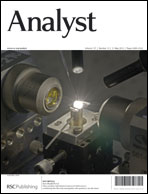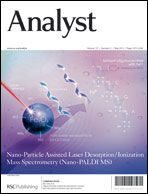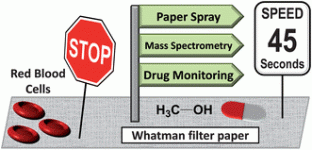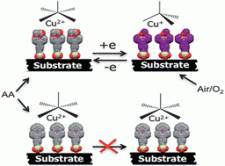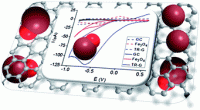Check out some of the HOT articles that have been published with Analyst this month!

Ho & Imae et al., Analyst, 2012, Advance Article
Fu Han Ho, Toyoko Imae and co-workers from the National Taiwan University of Science and Technology have successfully developed a unique sensing technique for monitoring the variation of solution concentrations and measuring the effective dielectric constant in a medium by using an ultra-small and label-free nanosensor.
A solution-based nano-plasmonic sensing technique by using gold nanorods
Fu Han Ho, Yung-Han Wu, Masaki Ujihara and Toyoko Imae
Analyst, 2012, Advance Article
DOI: 10.1039/C2AN35101C

Shao et al., Analyst, 2012, Advance Article
Yong Shao and colleagues from Zhejiang Normal University have studied the upconversion emission of Ag nanoclusters templated by single- and double-stranded DNAs in their investigation of sensor design.
Upconversion emission of fluorescent silver nanoclusters and in situ selective DNA biosensing
Qinghua Cui, Yong Shao, Kun Ma, Shujuan Xu, Fei Wu and Guiying Liu
Analyst, 2012, Advance Article
DOI: 10.1039/C2AN00025C
Jin Ouyang from Beijing Normal University and fellow Chinese scientists have made a simple small-molecule fluorescent probe, designed for the detection of human serum proteins via hydrophobic interactions after polyacrylamide gel electrophoresis. The new probe proved to be a good protein reporter due to its fast staining procedure. It also had low detection limits and high resolution.

Ouyang et al., Analyst, 2012, Advance Article
The development of simple and sensitive small-molecule fluorescent probes for the detection of serum proteins after native polyacrylamide gel electrophoresis
Fangfang Wang, Lingyun Huang, Na Na, Dacheng He, Dezhi Sun and Jin Ouyang
Analyst, 2012, Advance Article
DOI: 10.1039/C2AN35265F
A team from Canada have tackled the issue of the detection of contamination of jet fuels with aero-turbine lubricating oil in a paper from Hans-Peter Loock, from Queen’s University.

Loock et al., Analyst, 2012, Advance Article
Fluorescence excitation–emission matrix (EEM) spectroscopy and cavity ring-down (CRD) absorption spectroscopy of oil-contaminated jet fuel using fiber-optic probes
Hengameh Omrani, Jack A. Barnes, Alexander E. Dudelzak, Hans-Peter Loock and Helen Waechter
Analyst, 2012, Advance Article
DOI: 10.1039/C2AN35091B












